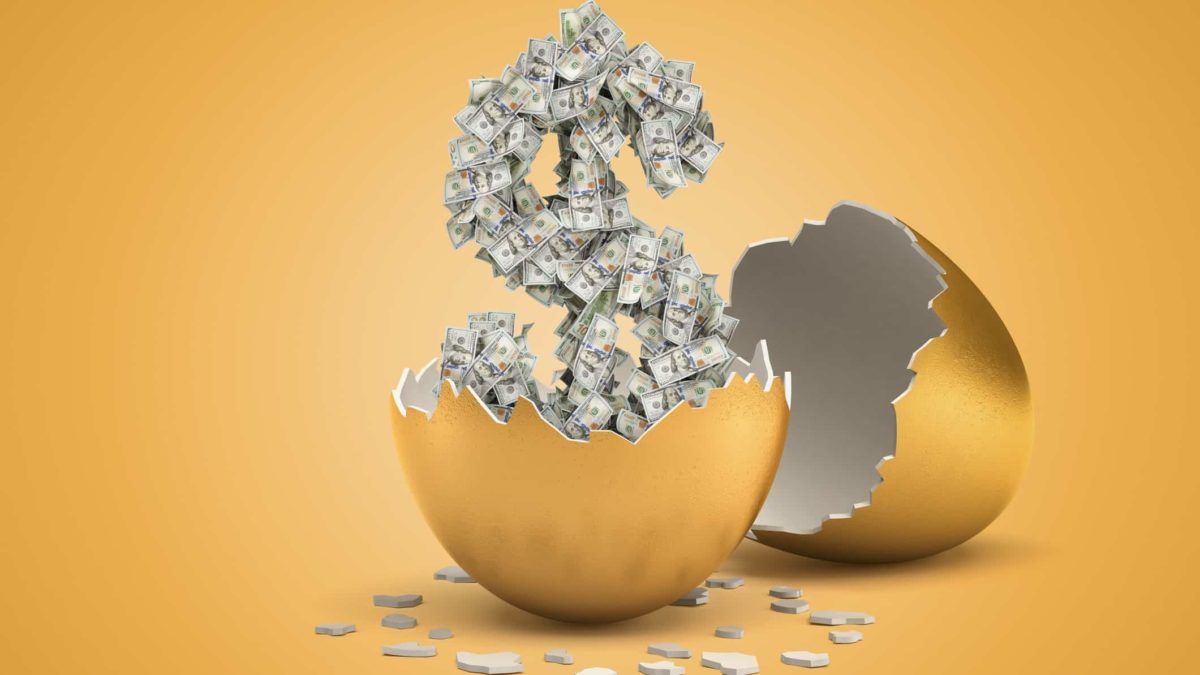What do Warren Buffet and Jeff Bezos' fortunes have in common? They were both (largely) built on the stock market. But you don't have to have a brilliant eye for goldmine shares and excellent timing to make money on the ASX. The simple power of compounding interest is all it takes.
"Compound interest is the eighth wonder of the world. He who understands it, earns it; he who doesn't, pays it." – Albert Einstein (reputedly)
Let's take an example. Say you have $1000 in spare coin to invest, and you pop it into stocks that continue to increase in value by 10% each year.
Then, you find each week you have an additional $100 that you can afford to pop invest on top of your original amount, so you do.
If you continue this for 13 years, you'll have invested $67,600 in total, but your portfolio will be worth a whopping $141,428.
You've more than doubled your money!
However, there's never any guarantee that a share will go up in value, and no amount of compound interest can save a portfolio of poorly chosen shares.
That's why we've compiled 2 approaches to the ASX that might suit a newbie investor.
Advice for a beginner looking to strategically invest in ASX shares
The blue-chip approach
If you're wondering how to invest in shares without taking huge risks, shares in blue-chip companies might be a good place to start your research.
While prior performance never guarantees future performance, blue-chip companies are usually recognisable and established. Generally, they have high market capitalisations and their share prices often show less volatility than others. These companies tend to show continuous and predictable growth, though that is never guaranteed.
They may be great options for new investors who feel a bit apprehensive or who might want a solid foundation for their portfolio. There are many blue-chip companies listed on the ASX, most of which can be found on the S&P/ASX 50 Index (ASX: XFL).
One such example is Rea Group Ltd (ASX: REA). If you don't recognise REA Group by name, you'll probably recognise its logo. This company is behind brands such as realestate.com and Flatmates.
It's a long-term ASX resident. The global digital advertising company has been listed on the ASX since 1999, weathering many a storm in its time.
REA Group has a large market capitalisation. It's worth around $18 billion, with approximately 132 million shares outstanding.
The exchange-traded fund approach
Exchange-traded funds (ETF) are traded on the ASX like stocks, but rather than being a portion of a company, they are a share in a fund that holds a selection of ASX listed-companies. Some investors believe ETFs are a great way to diversify your portfolio without much fuss.
Once more, it's important you take a personal approach to investing, as ETFs won't suit every investor or portfolio.
Often, ETFs will have a hold in all or most of the companies on a particular index, such as the S&P/ASX All Technology Index (ASX: XTX), the S&P/ASX 200 Index (ASX: XJO) or the All Ordinaries Index (ASX: XAO).
One example of an ETF is Betashares Nasdaq 100 ETF (ASX: NDQ). If the name doesn't give it away, Betashares Nasdaq 100 follows the US-based Nasdaq index.
The Nasdaq index is home to companies such as Amazon.com Inc (NASDAQ: AMZN), Apple Inc (NASDAQ: AAPL) and Tesla Inc (NASDAQ: TSLA).
Since these companies aren't listed in Australia, investors interested in this ETF might be looking for a way to get involved in the US market.









